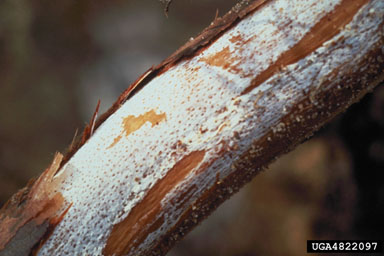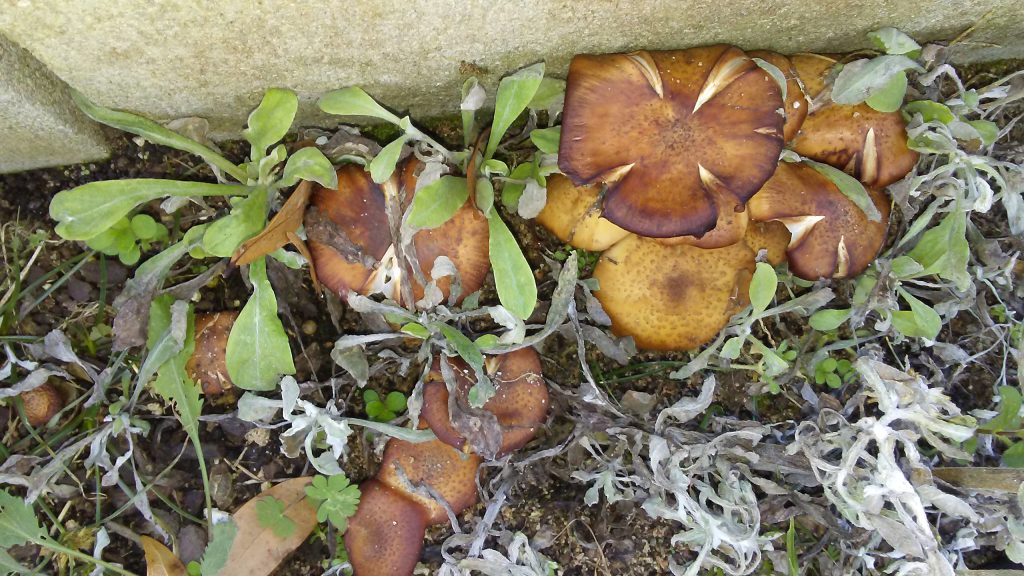Recently, an Extension Agent in the Florida Panhandle received a picture of some mushrooms popping up in a client’s garden. These particular mushrooms were in a spot where leftover mushroom compost had been dumped. The compost was previously used to grow oyster mushrooms and the client was hopeful that she had more oyster mushrooms growing in her yard. Unfortunately, the lab results came back stating the mushrooms in question were Armillaria spp.
Armillaria spp. cause root rot of trees and shrubs throughout the world. The fungus infects the roots and bases of trees, causing them to rot and eventually die. Some species of Armillaria are primary pathogens that attack and kill plants, but most are opportunistic pathogens that are attracted to unhealthy or stressed plants. Fruiting structures of the fungi can be recognized by the clusters of yellow to brown-colored mushrooms that emerge during wet conditions. However, the mushroom caps sometimes never form and the plant material needs to be inspected more thoroughly to find the disease culprit. Infected plants may have wilted branches, branch dieback, and stunted growth and should be removed and replaced with resistant species.

White mycelial fan under the bark of a root infected with Armillaria tabescens. Photo Credit: Ed Barnard
Management – The best method for controlling Armillaria root rot is with proper plant installation and maintenance. Planting plant material at the proper depth will allow the roots to breathe and reduce the opportunity for the roots to rot. Pruning tools should be sanitized between plant material. Proper irrigation and fertilization will also reduce the risk of plant disease and root rot. Lastly, you can choose to plant a diverse landscape with resistant species.
For more information on Armillaria root rot and a comprehensive list of resistant species, please view the EDIS publication: Armillaria Root Rot
- Gardening in the Panhandle LIVE! Program Summary: Pests of Florida Lawns and Landscape Plants - May 28, 2025
- Fun Facts About Ferns - April 30, 2025
- Gardening in the Panhandle LIVE! Program Summary: Freeze Friendly Foliage Plants - April 30, 2025

